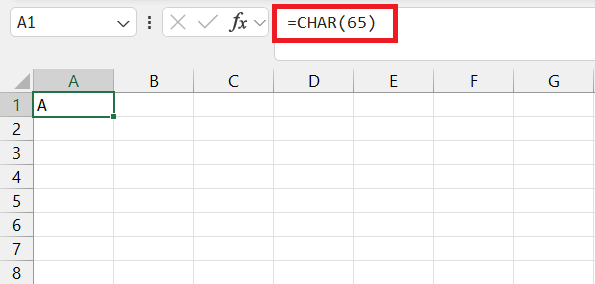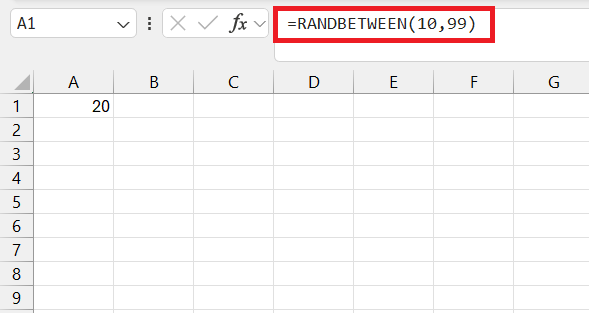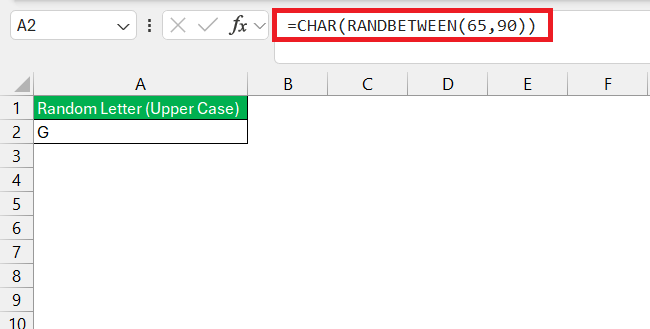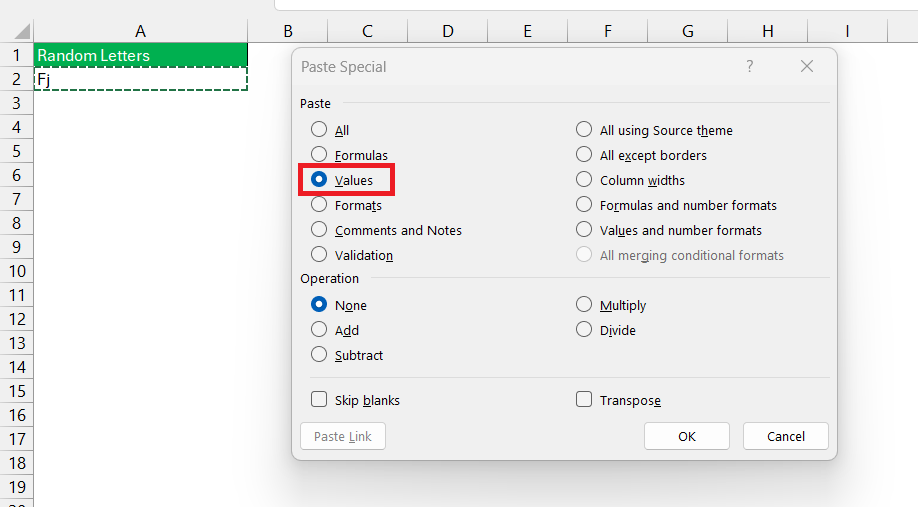Generating random letters in Microsoft Excel is a straightforward process that leverages the powerful CHAR and RANDBETWEEN functions. By combining these functions, you can create random single letters or even strings of letters for various applications, such as testing data or creating placeholders. This guide will walk you through the steps to harness Excel’s capabilities for random letter generation, providing practical examples and tips along the way.
Key Takeaways:
- Utilize the CHAR function to convert numbers to characters and the RANDBETWEEN function to generate random numbers, forming the basis of random letter generation.
- Combine CHAR and RANDBETWEEN in a formula like =CHAR(RANDBETWEEN(65,90)) to create random uppercase letters, or adjust for lowercase letters using RANDBETWEEN(97,122).
- Use the TEXTJOIN function or concatenation to generate strings of random letters, enabling the creation of multi-character random sequences.
- Random letters can be used for testing data, teaching materials, simulations, and security purposes like generating temporary passwords.
- To prevent dynamic formulas from recalculating, copy the results and paste them as values using Paste Special > Values, capturing the randomness at a specific moment.
Table of Contents
Introduction to Generating Randomness in Excel
Embracing the Chaos: Understanding Randomization
In Excel, the beauty of chaos can be harnessed with just a few clicks! Randomization, or the art of generating unpredictability, has surprisingly orderly applications in data management and analysis. It isn’t simply the roll of the dice; understanding randomization in Excel opens up a gameboard of possibilities.
Why Might You Need Random Letters in Excel?
Sometimes the need for random letters in Excel can catch you off guard, but they have their charm – and utility. Whether you’re conjuring up dummy data to test the resilience of your formulas, or creating training materials that demand placeholders free from bias, random letters step up as the silent heroes. For creative minds, they serve as the starting point for generating ideas or fostering art out of cells and spreadsheets.
The Foundations of Random Letter Generation
Exploring the CHAR Function
Dive deep into the CHAR function in Excel, which is like having a backstage pass to the ASCII character set. In plain speak, CHAR takes a number you choose and transforms it into a character. Need a capital “A”? Just type in =CHAR(65).
It’s that simple. This function becomes a wizard’s wand when you want to include characters that usually shun the keyboard, like line breaks or that elusive check mark.
The Role of RANDBETWEEN in Randomness
RANDBETWEEN plays the game of chance in your spreadsheet. Essentially, it’s your digital random number generator. By setting a bottom and top limit, RANDBETWEEN picks a number from the range.
Each time giving you a different result upon recalculation – perfect for simulating a roll of dice or selecting a random character index when paired with CHAR.
Step-by-Step: Simple Formulas for Random Letters
Formula 1: Generating Individual Random Characters
Getting a random letter in Excel doesn’t require a magic spell; just a simple formula. By combining the power of CHAR and RANDBETWEEN, you create a formula like =CHAR(RANDBETWEEN(65,90)), which will return an unexpected uppercase letter every time.
Want something more low-key? Adjust the numbers to the lowercase range (97-122), and voilà, a surprise in small caps awaits!
Formula 2: Crafting Strings of Random Letters
When you need more than a solo act and want a whole ensemble of letters, crafting strings of randomness comes into play. By using a concoction like =TEXTJOIN(“”, TRUE, CHAR(RANDBETWEEN(65, 90)), CHAR(RANDBETWEEN(97, 122))) repeatedly, you build strings of alternating uppercase and lowercase letters.
With each copy, new and unique strands of 6-letter text strings unfurl down your Excel canvas, showcasing randomness at its finest.
Practical Applications and Creative Uses for Random Letters
From Testing to Teaching: Where Random Letters Shine
Random letters are the undercover agents in Excel’s toolkit. They shine bright in testing phases, where they assume the role of neutral data—unbiased and impartial, ensuring your functions and formulas get a rigorous workout. In the classroom, these random sequences turn into tools for teaching language, cryptography, or coding, offering students a sandbox to explore patterns, frequency analysis, and problem-solving.
The Unseen Power: Behind-the-Scenes Uses in Excel
Under the surface, random letters in Excel are the unsung heroes. They stealthily play a crucial role in security by hashing out temporary passwords, and they blend into the backdrop of data sorting tests, ensuring you’re not accidentally swayed by existing patterns. In scenarios like simulations, they’re the wild cards that introduce variability, crucial for robust modeling and analysis.
Tips, Tricks, and Troubleshooting
Converting Dynamic Results to Static Values
The dynamism of Excel’s formulas is usually a blessing, but when you want to capture randomness, you need to halt the ever-changing results. Say goodbye to fluctuating figures by copying the cells (Ctrl + C) and pasting them as values (select Paste Special > Values).
This neat trick transforms dynamic formulas into unchangeable numbers, locking in the randomness at the moment of your choice.
Best Practices in Randomness
When playing with randomness, keep best practices close to your chest. Remember to set a purpose for your randomness; aimless use can lead to chaos. Use seeds for reproducibility in sensitive cases, and always, always double-check the range of your RANDBETWEEN to prevent unexpected outcomes. Lastly, document your steps, because the path of randomness is easy to create but challenging to retrace.
FAQs on Generating Random Letters in Excel
Is there a random letter generator in Excel?
No, Excel doesn’t have a built-in random letter generator function. However, you can craft your own using the CHAR and RANDBETWEEN functions to simulate this effect and generate random letters as needed.
Can I Generate a Specific Length of Random String?
Absolutely! In Excel, you can generate a string of any specific length by nesting several CHAR(RANDBETWEEN()) functions within a CONCATENATE or & operator, tailored to the length you require. Just replicate the formula for the number of characters you want.
How Do I Produce a Random List Without Duplicates?
To create a list of random, non-duplicate values in Excel, start with the RAND or RANDBETWEEN function to generate a larger list than needed. Once you’ve got your list, use the ‘Remove Duplicates‘ feature to filter out repeats, or try an advanced tool like the Duplicate Remover add-in for a more refined approach.
Is There a Way to Generate Only Vowels or Consonants?
Yes, you can tailor Excel formulas to generate only vowels or consonants by specifying the ASCII codes for these letters inside the RANDBETWEEN function and pairing it with CHAR. For vowels, use the ASCII codes specific to either uppercase or lowercase vowels, and similarly for consonants.
What About Non-English Characters and International Alphabets?
Excel can also handle random generation for non-English characters and international alphabets, given the right character codes. Use CHAR alongside RANDBETWEEN, considering the specific ASCII or Unicode range for the language’s character set you’re interested in. Be mindful of Excel’s capabilities with different alphabets and your system’s language settings.
John Michaloudis is a former accountant and finance analyst at General Electric, a Microsoft MVP since 2020, an Amazon #1 bestselling author of 4 Microsoft Excel books and teacher of Microsoft Excel & Office over at his flagship MyExcelOnline Academy Online Course.












